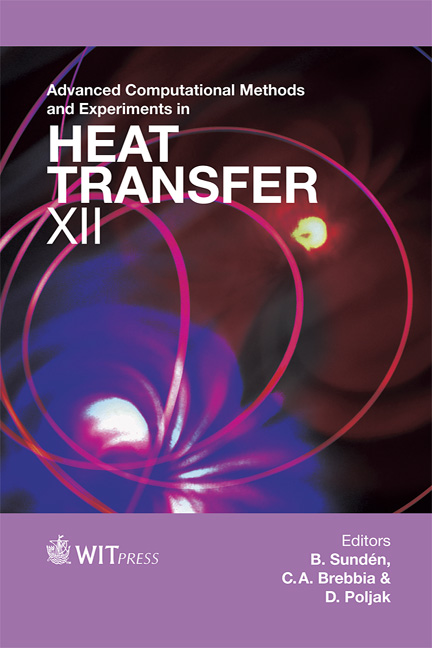Thermal Invisibility Through Geometrical Transformation: A Segmented Cloaking Approach
Price
Free (open access)
Transaction
Volume
75
Pages
8
Page Range
39 - 46
Published
2012
Size
519 kb
Paper DOI
10.2495/HT120041
Copyright
WIT Press
Author(s)
E. H. Ooi & V. Popov
Abstract
Thermal invisibility through geometrical transformation can be achieved; however, the required materials would be inhomogeneous and thermally anisotropic. The difficulty in manufacturing materials that are inhomogeneous and thermally anisotropic in the desired way, has been a major obstacle in the fabrication of a thermal cloaking device. In this study, the potential of using segmented cloaking to mimic the inhomogeneous and thermally anisotropic properties to achieve thermal invisibility is explored. Segmented cloaking involves the use of a multi-layered structure – each layer defined by homogeneous and thermally isotropic materials – to replace the inhomogeneous and anisotropic material. This reduces the requirements on the materials used in the fabrication of a thermal cloaking device. The effectiveness of the segmented thermal cloak is examined numerically and the effects of the number of segments used and the thickness ratio of the segments on the level of thermal invisibility achieved are investigated. Keywords: segmented thermal cloaking, coordinate transformation, thermal resistance, homogeneous and isotropic, thermal conductivity. 1 Introduction Pendry et al. [1] demonstrated that invisibility from an electromagnetic field can be achieved by bending the trajectory of the electromagnetic waves around a given object. The diversion of the electromagnetic waves is carried out mathematically through a linear geometrical transformation, which in practice, leads to the use of inhomogeneous and anisotropic materials as the cloaking
Keywords
segmented thermal cloaking, coordinate transformation, thermal resistance, homogeneous and isotropic, thermal conductivity.





